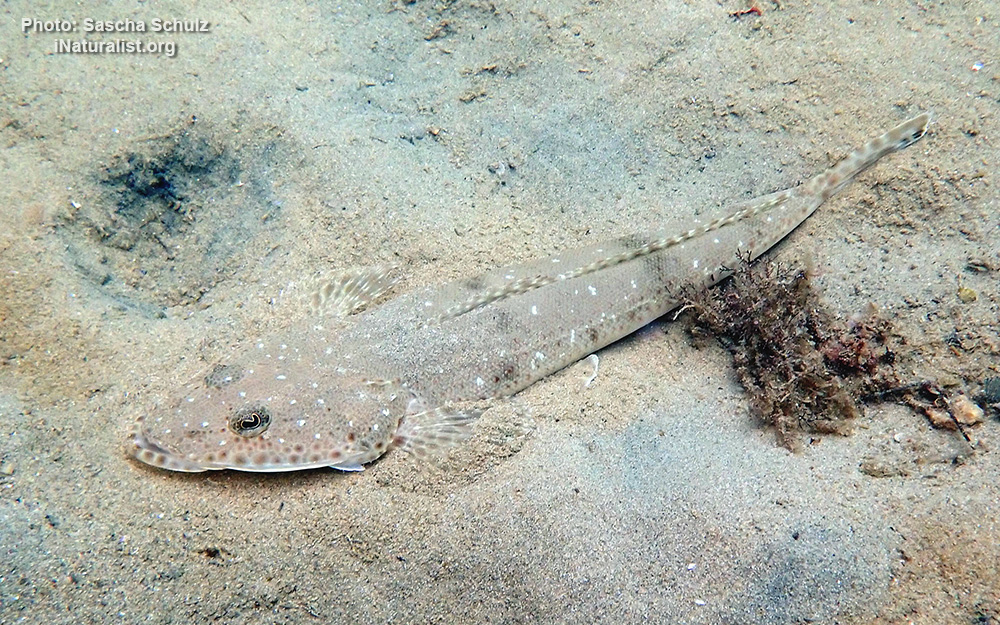Southern bluespotted flathead
(Platycephalus speculator)

Classification
General data
Platycephalus speculator, the southern bluespotted flathead, Castelnaus flathead, deepwater flathead, king flathead, Lakes Entrance flathead, longnose flathead, shovelnose flathead, Southern dusky flathead, Southern flathead or yank flathead, is a common species of flathead. This species is endemic to southern Australia.
Platycephalus speculator has and elongated and slightly flattened body with a large, flattened head which is about one-third of the standard length with several smooth bony ridges which have very few spines on them. It has moderately large eyes with wide, rounded lappets on the irises. The large mouth has small, pointed teeth on the jaws, one or two rows of vomerine teeth and a single row of palatine teeth on each of the palatines. There are no enlarged canine-like teeth. The preoperculum has two robust spines at its angle with the lower spine being a little longer than the upper.
The first dorsal fin is short based, has 8 or 9 spines with the first spine being very short and is separate. The second dorsal fin has a moderately long base with 13 or 14, typically 14, soft rays with the first rays being the longest. The anal fin has a similar shape and is opposite the second dorsal fin, has a slightly longer base and contains 14 soft rays. The caudal fin is truncate to rounded.
This species attains a maximum published total length of 90 cm (35 in), and a maximum weight of 8 kg (18 lb).
The overall colour is sandy to dark brown or greyish, ligher ventrally, with a lot of dark blotches and whitish to bluish spots. There are between 3 and 5 large white-margined black spots or blotches on the distal part of the caudal fin, progressively shrinking dorsally.
Platycephalus speculator is endemic to southern Australia where it ranges from Point Hicks in Victoria to Kalbarri in Western Australia. It also occurs off northern Tasmania.
This species prefer areas of sand and seaweed beds in shallow coastal waters, particularly shallow sheltered bays, living down to 30 m (98 ft) depth.











